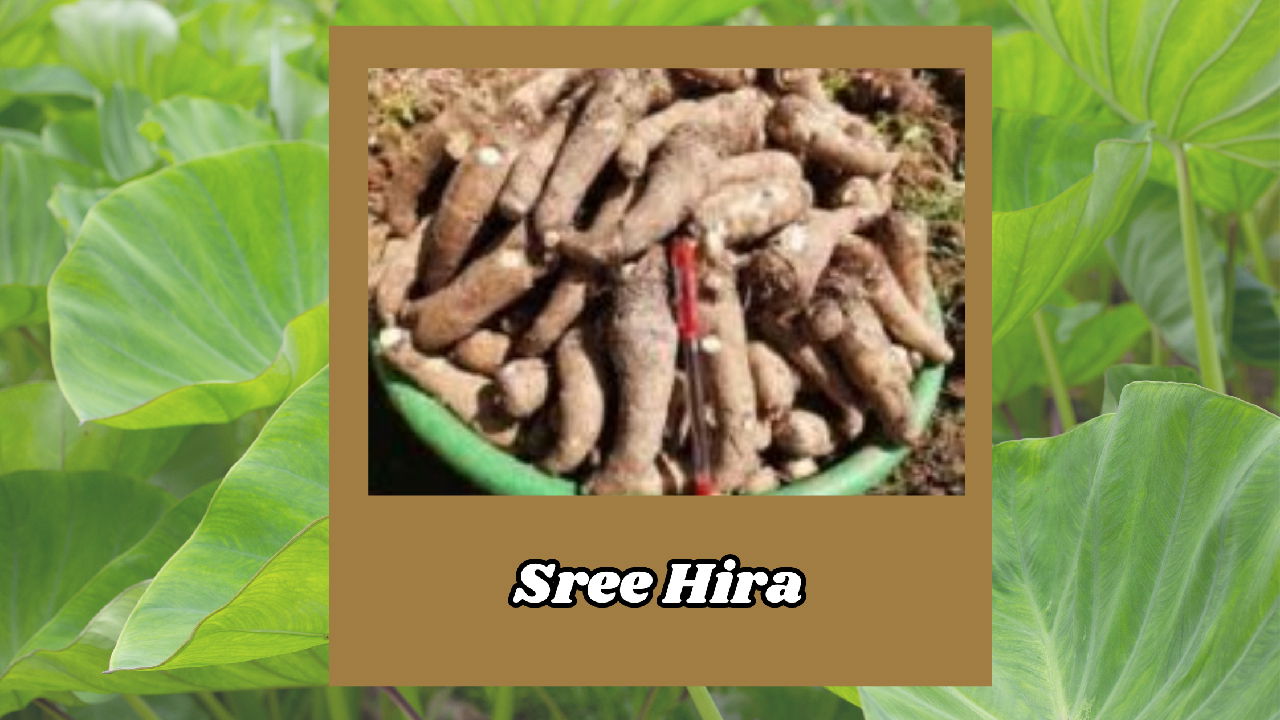
Taro (Colocasia esculenta (L.) Schott.) is a starchy tuber crop that holds great significance in many parts of the world, particularly in India, where it is known by various regional names. In Hindi, it is called Arvi; in Malayalam, Chembu; in Tamil, Cheppan Kizangu; in Telugu, Chemalu; in Kannada, Shama Gadde; in Oriya, Saru; and in Assamese and Bengali, Kachu. Taro is believed to have originated in South Central Asia, possibly in India or Malaysia. It has been cultivated for thousands of years and is a staple food in many cultures, valued for its edible corms and cormels.
Varieties of Taro and Their Uses
Taro comes in different varieties, each with distinct characteristics. The 'eddoe' type is particularly notable for its cormels, which are often preferred as a vegetable due to their size and texture. These cormels grow from the sides of the mother corm and are relatively large, making them a popular choice for both consumption and planting material. The mother corms and cormels are commonly used for propagation in taro cultivation.
Sree Hira: A Breakthrough in Taro Cultivation
In response to the challenges faced by traditional taro varieties in Odisha, the Regional Centre of ICAR-Central Tuber Crops Research Institute (CTCRI) in Bhubaneswar developed a new elite variety known as Sree Hira. This variety has been specifically designed to thrive under Odisha’s climatic and soil conditions, making it an ideal choice for farmers in the region. Sree Hira is particularly suited for rainfed upland areas and irrigated medium and lowland environments, providing farmers with a versatile option that can adapt to different farming conditions.
Disease Resistance and Productivity
One of the most significant advantages of the Sree Hira variety is its resistance to leaf blight, a common and often devastating disease in traditional taro varieties. Leaf blight can severely impact the yield and quality of taro crops, but Sree Hira's tolerance to this disease ensures a more reliable and higher yield. This variety produces 12-16 cormels per plant, each measuring 14-18 cm in length, which are ideal for both consumption and market purposes.
Agronomic Features of Sree Hira
-
Growing Cycle and Period: Sree Hira is a seasonal crop with a growing period of approximately 180 days. Its growing cycle aligns well with the agricultural calendar in Odisha, making it easy to integrate into existing farming practices.
-
Light and Temperature Requirements: This variety is a day-neutral plant, meaning it is not sensitive to the length of daylight. It thrives best in temperatures ranging from 28-32˚C, although it is also tolerant of higher temperatures, which is beneficial in the hot and humid climate of Odisha.
-
Soil and Water Requirements: Sree Hira can be cultivated in a variety of soil types, including sandy loam, loamy soil, and even clay soils. It prefers soils with a pH between 5.5 and 7.0, making it versatile across different soil conditions. In terms of water requirements, Sree Hira needs 700-1000 mm of rainfall, though it is also drought and submergence tolerant, which is crucial in areas prone to erratic rainfall.
-
Nutrient Requirement: To maximize the yield and quality of Sree Hira, it is recommended to apply 10 tons of Farm Yard Manure (FYM) per hectare. This should be complemented with N-P-K (Nitrogen-Phosphorus-Potassium) fertilizers at a ratio of 80-60-80 kg/ha. Proper soil aeration and adequate water management are crucial to ensure the best possible growth and yield.
-
Aeration and Root System: The plant has an adventitious root system, which primarily spreads within the upper 40 cm of soil depth. While Sree Hira requires good soil aeration, it can tolerate some degree of submersion, making it resilient in varied growing conditions.
-
Pest and Disease Resistance: Beyond its resistance to leaf blight, Sree Hira is generally free from major pest issues, making it a low-maintenance crop. This resilience is a key factor in its potential to improve yields and reduce losses for farmers.
Economic and Culinary Benefits
Sree Hira is not only a high-yielding variety but also boasts excellent cooking qualities. Its cormels have low acridity, making them more palatable and versatile in culinary applications. This variety’s adaptability to different farming conditions and its resistance to common diseases make it an economically viable option for farmers, potentially improving their income and food security.
















